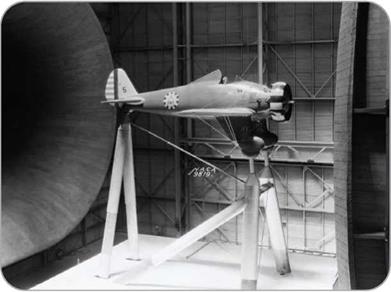Materials and Structures
|
M |
aterials and structures are general terms used in flight. They refer to the selection of materials used in aircraft and spacecraft and the science of constructing the craft for endurance and safety. Together and separately, the two fields are vital to aerospace engineering.
Wood and Canvas
The first aircraft were made from wood because it was light, fairly strong, available, easily shaped, and easy to repair.
The Wright brothers’ Flyer airplane of 1903 was made mainly from spruce and bamboo covered with canvas.
To save weight, wings were not solid wood. Instead, they had a skeleton-like wooden frame. Long timbers called spars ran the length of the wings. Shorter pieces of wood, called ribs, ran from front to back. Fabric stretched over the ribs gave the wings their shape. Riband-spar construction is still used today.
About 170,000 aircraft were built during World War I (1914-1918), and nearly all of them were wooden. Most early planes had biplane wings-one wing above the other-although the first powered monoplane had flown a short distance in 1906. Some were triplanes, with three wings stacked on top of each other. The wings were connected by wooden struts and tight bracing wires that formed a strong structure.
New Materials
Aircraft engines quickly became too large, heavy, and powerful for wooden aircraft. Manufacturers looked for a stronger material that also was light and easy to shape. The first material they chose was aluminum. Aluminum is a lightweight metal that is rustproof, but it is fairly soft and weak.
In the early 1900s, a substance called duralumin was made. It was an alloy, or
О Work begins on the frame of an airship built in the 1930s. The metal ring-frames that give the nose of the giant aircraft its shape are clearly visible.

a metal mixed with other substances. Duralumin was made from aluminum with tiny amounts of copper, manganese, and magnesium added. When heated and quickly cooled again, it was soft and easy to bend and shape into parts for aircraft. After being shaped, the duralumin slowly hardened and strengthened over the next few days, becoming much harder and stronger than pure aluminum. This process is called age hardening, and it made duralumin an ideal material for aircraft. Duralumin was used to make the metal frames that gave airships their shape.
Duralumin was not perfect, however. Although pure aluminum did not corrode, duralumin did. Corrosion is a chemical reaction that eats away at
…
ALLOYS
The properties of a metal can be changed by mixing other substances with it to create an alloy. Brass is an alloy of mostly copper and zinc, while bronze is made up of copper and tin. Steel is an alloy of iron and carbon, and stainless steel comprises iron, carbon, and chromium.
Aluminum is alloyed with other metals to make it stronger. Today, there are dozens of different aluminum alloys for building aircraft and spacecraft. Instead of a name, such as duralumin, each alloy now has a code number that shows what it is made of and what its properties are.
For example, aluminum alloys with numbers beginning with 2 contain copper.
If the number begins with 7, the alloy contains zinc and magnesium. Other numbers indicate different ingredients.
_______________ J
 a metal. The most familiar example of corrosion is iron turning to rust in damp conditions. A new material called Alclad was invented to deal with the problem of corrosion in duralumin. It was made by coating duralumin with pure aluminum. The pure metal protected the alloy.
a metal. The most familiar example of corrosion is iron turning to rust in damp conditions. A new material called Alclad was invented to deal with the problem of corrosion in duralumin. It was made by coating duralumin with pure aluminum. The pure metal protected the alloy.










